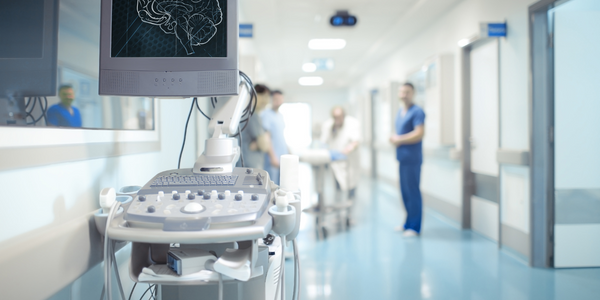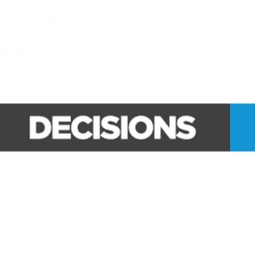下载PDF
New Ocean Health Solutions

技术
- 平台即服务 (PaaS) - 数据管理平台
适用行业
- 医疗保健和医院
服务
- 软件设计与工程服务
挑战
New Ocean 需要一个平台,使他们能够直观地设计和编码他们的 Insight Engine,他们的所有数据流或输入都输入到该引擎中。洞察引擎确定许多事情,包括活动或挑战是否已完成或是否已获得奖励。消息是为慢性病病例创建的,通过弹出消息提醒用户做事。跟踪设置用于监控用户如何实现目标,例如每周运行三天,连续四个星期,以满足奖励。奖励取决于公司,应用程序中内置了三种基本奖励类型。这些包括美元、徽章或积分。 New Ocean 希望将下游业务逻辑包含在单个系统中,因此他们决定研究规则引擎。
客户
新海洋
关于客户
New Ocean通过解决高血压和心房颤动等慢性病以及生活方式管理,改善了整个组织的健康结果并降低了成本。 New Ocean 使用嵌入式数字指导、行为科学和预测分析来帮助人们实现他们的健康目标,并使组织从不断增长的数字医疗保健环境中受益。
解决方案
New Ocean 认为在架构上实施规则引擎是有意义的,因此他们根据他们的要求评估了大约四家供应商。
New Ocean 从健康数据聚合器中获取健康数据,并通过应用程序中的规则集进行处理,利用决策,并就某些项目的注册等提供建议。 New Ocean 还使用 Decisions 作为作业调度程序,当您已经有一些想要从作业运行的代码并将其编译到 .NET 应用程序中时,它可以简化流程。作业运行或调用其中一个 API 的 API 并启动作业,因此它非常灵活。
运营影响
相关案例.

Case Study
Hospital Inventory Management
The hospital supply chain team is responsible for ensuring that the right medical supplies are readily available to clinicians when and where needed, and to do so in the most efficient manner possible. However, many of the systems and processes in use at the cancer center for supply chain management were not best suited to support these goals. Barcoding technology, a commonly used method for inventory management of medical supplies, is labor intensive, time consuming, does not provide real-time visibility into inventory levels and can be prone to error. Consequently, the lack of accurate and real-time visibility into inventory levels across multiple supply rooms in multiple hospital facilities creates additional inefficiency in the system causing over-ordering, hoarding, and wasted supplies. Other sources of waste and cost were also identified as candidates for improvement. Existing systems and processes did not provide adequate security for high-cost inventory within the hospital, which was another driver of cost. A lack of visibility into expiration dates for supplies resulted in supplies being wasted due to past expiry dates. Storage of supplies was also a key consideration given the location of the cancer center’s facilities in a dense urban setting, where space is always at a premium. In order to address the challenges outlined above, the hospital sought a solution that would provide real-time inventory information with high levels of accuracy, reduce the level of manual effort required and enable data driven decision making to ensure that the right supplies were readily available to clinicians in the right location at the right time.

Case Study
Gas Pipeline Monitoring System for Hospitals
This system integrator focuses on providing centralized gas pipeline monitoring systems for hospitals. The service they provide makes it possible for hospitals to reduce both maintenance and labor costs. Since hospitals may not have an existing network suitable for this type of system, GPRS communication provides an easy and ready-to-use solution for remote, distributed monitoring systems System Requirements - GPRS communication - Seamless connection with SCADA software - Simple, front-end control capability - Expandable I/O channels - Combine AI, DI, and DO channels

Case Study
Driving Digital Transformations for Vitro Diagnostic Medical Devices
Diagnostic devices play a vital role in helping to improve healthcare delivery. In fact, an estimated 60 percent of the world’s medical decisions are made with support from in vitrodiagnostics (IVD) solutions, such as those provided by Roche Diagnostics, an industry leader. As the demand for medical diagnostic services grows rapidly in hospitals and clinics across China, so does the market for IVD solutions. In addition, the typically high cost of these diagnostic devices means that comprehensive post-sales services are needed. Wanteed to improve three portions of thr IVD:1. Remotely monitor and manage IVD devices as fixed assets.2. Optimizing device availability with predictive maintenance.3. Recommending the best IVD solution for a customer’s needs.

Case Study
HaemoCloud Global Blood Management System
1) Deliver a connected digital product system to protect and increase the differentiated value of Haemonetics blood and plasma solutions. 2) Improve patient outcomes by increasing the efficiency of blood supply flows. 3) Navigate and satisfy a complex web of global regulatory compliance requirements. 4) Reduce costly and labor-intensive maintenance procedures.

Case Study
Harnessing real-time data to give a holistic picture of patient health
Every day, vast quantities of data are collected about patients as they pass through health service organizations—from operational data such as treatment history and medications to physiological data captured by medical devices. The insights hidden within this treasure trove of data can be used to support more personalized treatments, more accurate diagnosis and more advanced preparative care. But since the information is generated faster than most organizations can consume it, unlocking the power of this big data can be a struggle. This type of predictive approach not only improves patient care—it also helps to reduce costs, because in the healthcare industry, prevention is almost always more cost-effective than treatment. However, collecting, analyzing and presenting these data-streams in a way that clinicians can easily understand can pose a significant technical challenge.






